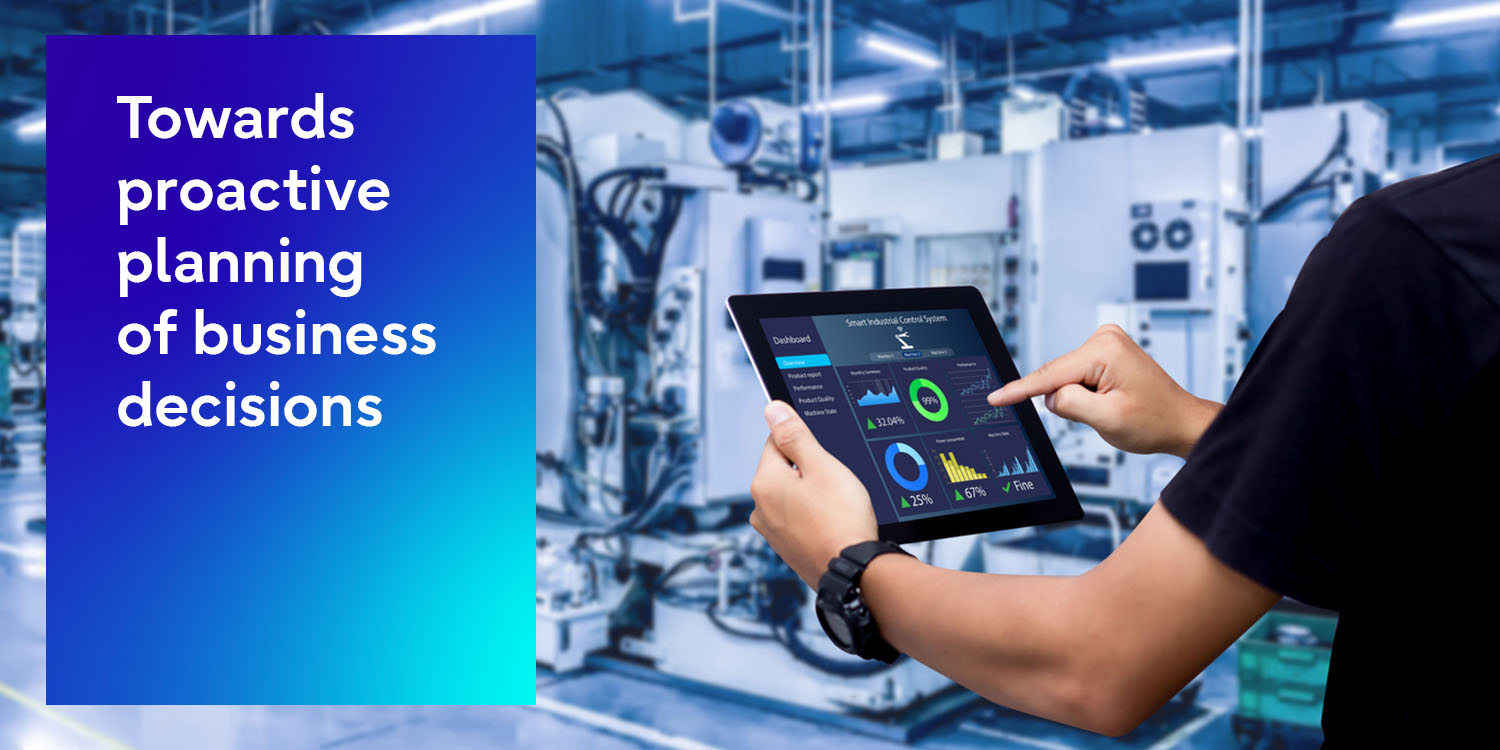Smart Manufacturing – Applied Observability

Most enterprises have two data-to-information flows: first a vertical one “from business application through infrastructure to the factory floor PLC”, and secondly a horizontal one, for collecting data from various sources and sharing it to customers. Both of these should be effectively orchestrated and hold an integrated approach across business functions, applications, and infrastructure and operations teams. So many smart steps are needed to enable the just-in-time action to reaction and proactive planning of business decisions! Is there any place for improvement left?
Vertical data-to-information flow
In the enterprises we have several data sources for various purposes. And most often each of them has their own monitoring solutions. This means that we need to start using complex multi-applications in problem solving. Time consuming and not so effective at all.
In addition, in the factories, we have several service providers for services like ERP, MES, Scada, IoT, infrastructure and so forth. They all are monitored and observed separately by respective service providers, and Service Desk is maybe the only connection point for all different service providers.
As you might imagine, this operation model is a reactive one, as no-one has an overall view and or understanding of the different services. Too often this leads to high and unpredicted costs and also, in worst cases, to production outages.
The solution? To build so-called pro-active AI-based system level correlative umbrella monitoring solution. With the customer’s production experts and different service providers to build a playbook and instruction book for 24/7 monitoring operation center personnel.
This kind of an AI based observability solution enables monitoring center personnel see and understand cause-and-effect between the different incidents and fix them before actual incident will occur or send a ticket to the Service Desk for actions. Smart always-on monitoring center is capable to follow parent and child tickets automatically for smooth operation.
Horizontal systems of records information flow
Enterprises are based on different processes; data sources and data may have several locations and versions in use. Most often we want to utilize different data sources in our operations but, as they are all in separate data bases, we need to manually identify relevant ones to combine them for our business operations. In order to work effectively, we ought to be able to automate data-to-information flow with e.g. rules and hence reduce manual “error threat” operations.
If we look at this from e.g. life cycle management and asset management angle to work with, we cannot manage assets unless we know what we have at the factory floor, inventory and e.g. production plans. From security point of view, we should understand assets´ vulnerabilities and from the life cycle point of view their e.g. certifications, models, costs and availability etc. To be a little more concrete, if you should maintain any assets − how would you know who really is the nearest maintenance worker, is s/he skilled and does s/he have necessary spare parts available? And how about workers´ time management, easy reporting and route planning to the next location? This is part of so-called connected worker theme.
All these can be managed and developed further with only one technology platform. The key here is to define the business use cases and processes which truly work well together with relevant stakeholders.
If this blog is resonating with your daily work life challenges, please contact us for further discussion!
- The writer is a Fujitsu Distinguished Engineer working as Fujitsu Finland Sustainable Manufacturing CTO and Fujitsu Global Sustainable Manufacturing Principal Offering Manager.
